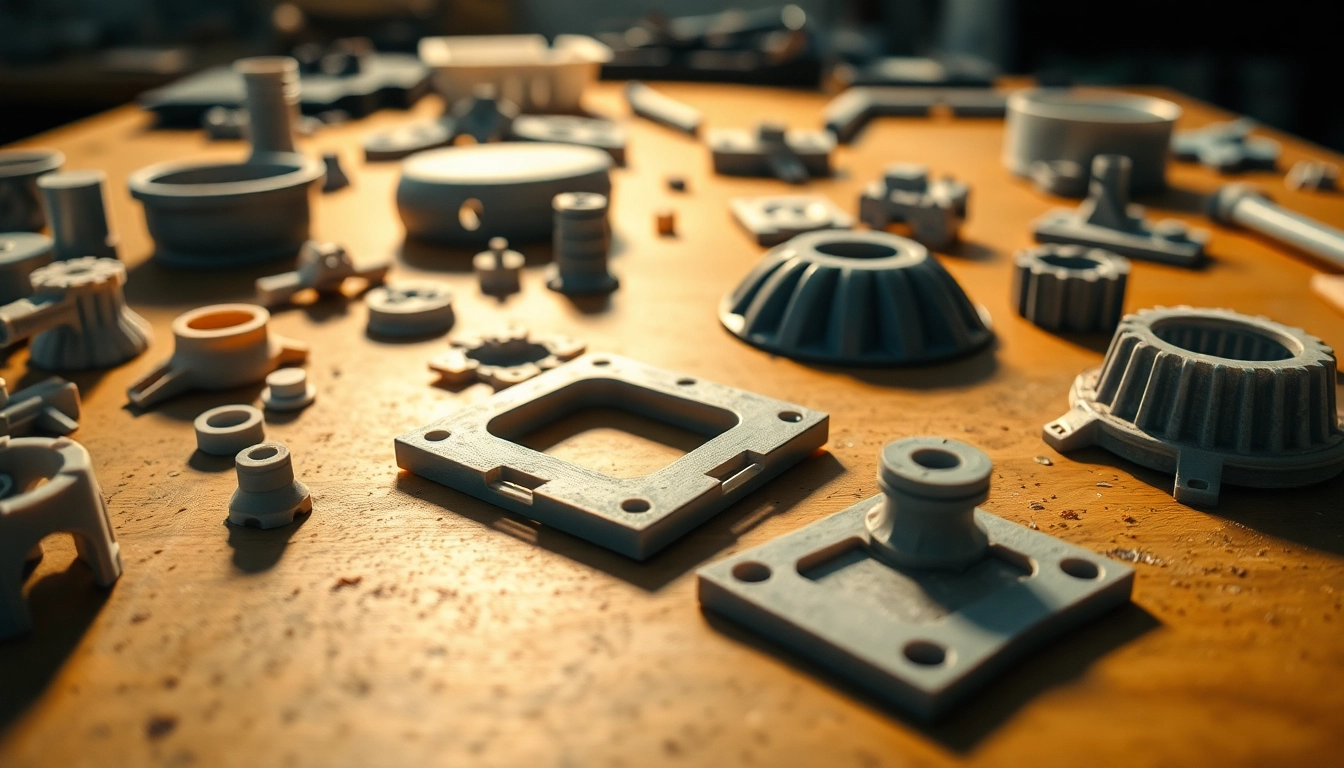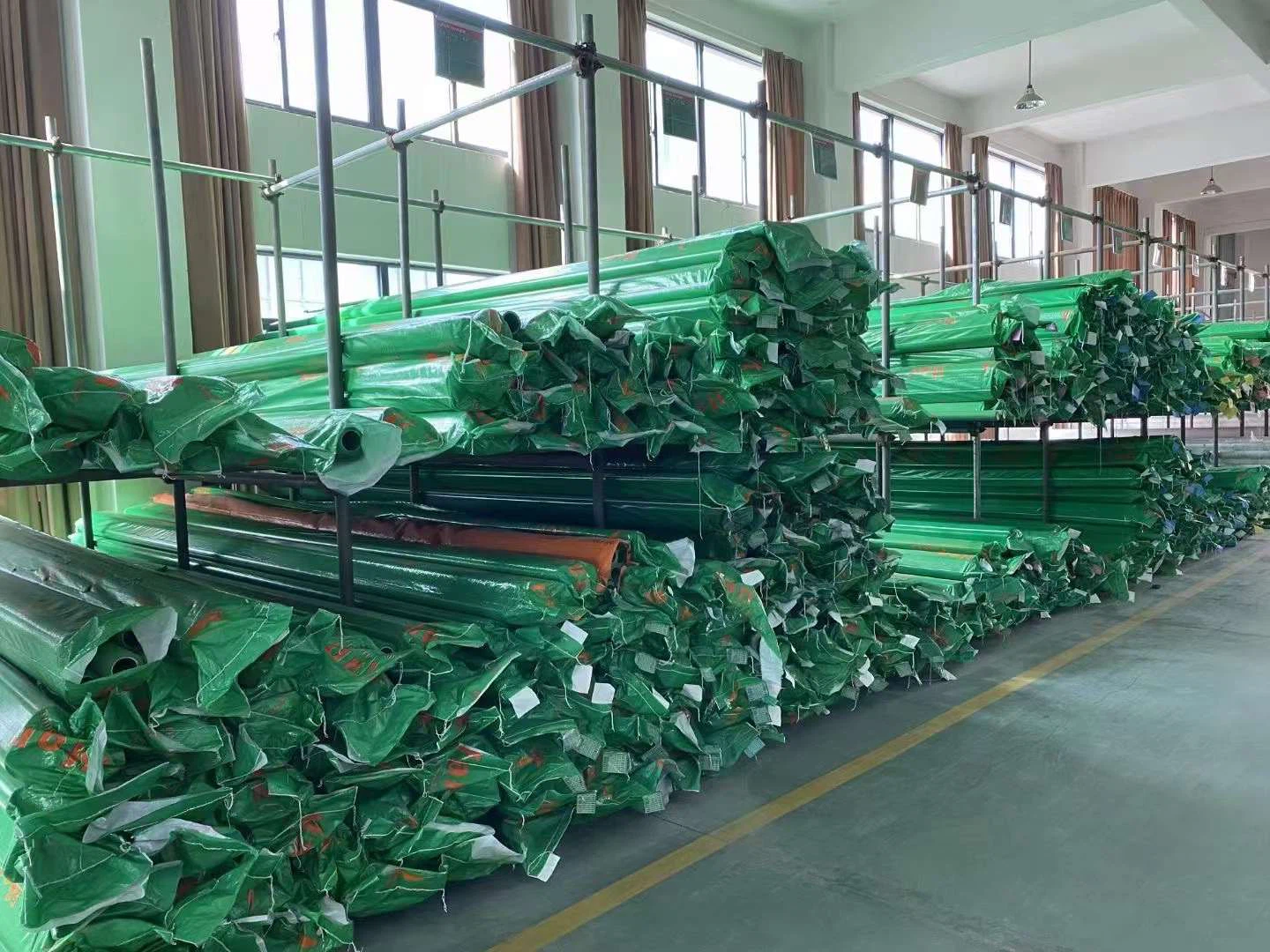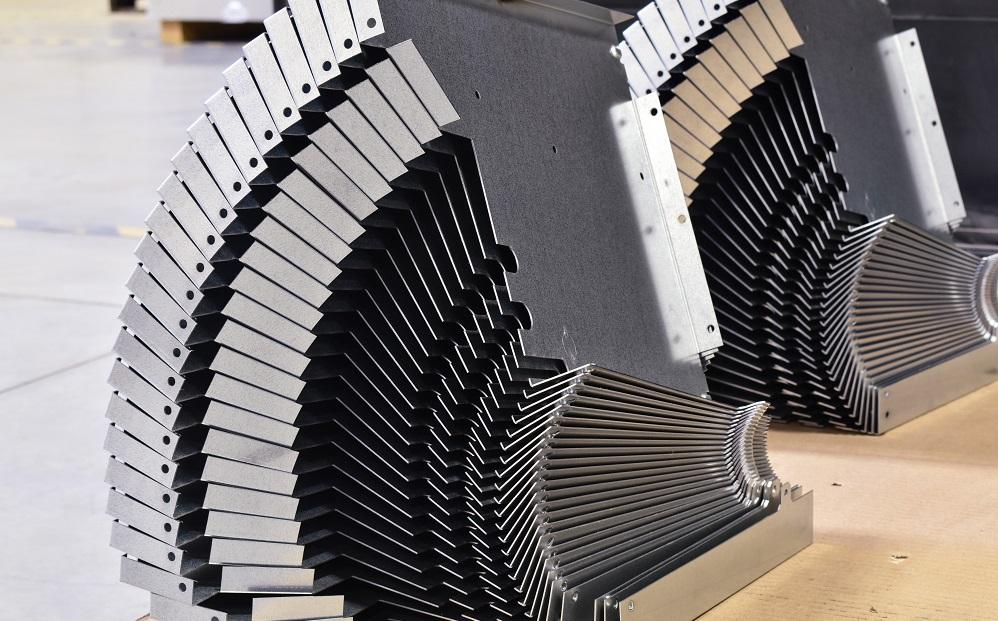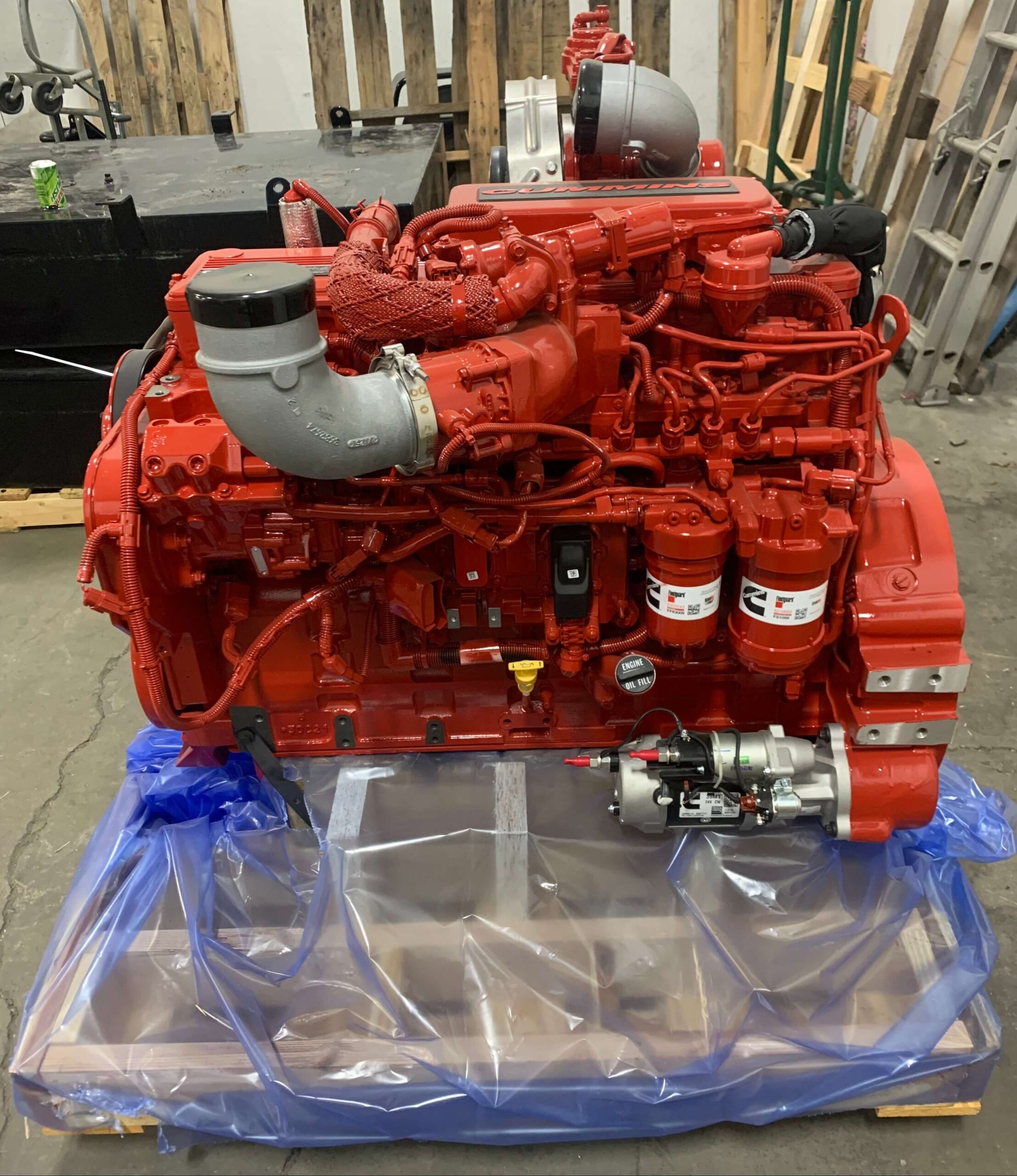Understanding Injection Molded Parts
What are Injection Molded Parts?
Injection molded parts are components produced through a manufacturing process known as injection molding, which involves injecting molten material—typically plastic—into a mold to shape and solidify the part. This method allows for the mass production of intricate designs with high precision and repeatability, making it indispensable in various industries including automotive, electronics, and consumer goods. The process not only enhances efficiency but also reduces waste, as excess material can often be recycled.
The key benefits of injection molded parts include low per-unit costs, high-volume production capabilities, and the ability to produce complex shapes that would be difficult or impossible to create through other manufacturing processes. Components ranging from simple plastic housings to intricate medical devices are among the many applications of injection molded parts.
The Injection Molding Process Explained
The injection molding process consists of several key steps:
- Material Preparation: Raw plastic materials, in the form of granules or pellets, are fed into the hopper of the injection molding machine.
- Melting: The materials are heated until they melt in the barrel of the machine. A screw or plunger mechanism forces the molten plastic towards the mold.
- Injection: The molten plastic is injected into a pre-heated mold cavity under high pressure. This is where the term “injection molding” comes from.
- Cooling: Once the mold is filled, the part is allowed to cool and solidify. Cooling time depends on the part’s thickness and material.
- Ejection: After cooling, the mold opens, and ejector pins push the finished part out of the mold.
- Finishing: Parts may undergo secondary operations like trimming, painting, or assembling, depending on their intended use.
This method produces parts with tight tolerances and a superior surface finish, making injection molded parts a preferred choice in many applications requiring quality and durability.
Types of Materials Used in Injection Molding
Injection molding utilizes a variety of materials, each selected based on the desired properties of the final product. Common materials include:
- Thermoplastics: Commonly used plastics like ABS (Acrylonitrile Butadiene Styrene), PVC (Polyvinyl Chloride), and polycarbonate are favored for their versatility, durability, and recyclability.
- Thermosetting Plastics: Such as epoxy and phenolic resins, these materials harden permanently after being shaped, making them suitable for applications requiring high resistance to heat and chemicals.
- Elastomers: Flexible materials that offer excellent elasticity, ideal for creating a variety of products from seals to gaskets.
- Composites: Reinforced with materials like glass or carbon fibers to achieve superior strength and rigidity.
Selecting the right material is crucial in ensuring the performance and longevity of the end product while also taking manufacturing costs into consideration.
Design Considerations for Injection Molded Parts
Best Practices for Designing for Injection Molding
Designing parts for injection molding requires an understanding of both the material properties and the manufacturing process itself. Best practices include:
- Uniform Wall Thickness: Ensuring consistent wall thickness helps prevent warping and shrinkage during cooling.
- Avoiding Sharp Corners: Using rounded corners can enhance the flow of plastic into the mold cavity.
- Draft Angles: Including proper draft angles facilitates easy ejection from the mold, reducing wear and tear.
- Minimizing Complexity: Keeping designs straightforward can lower production costs and reduce the risk of defects.
By following these guidelines, designers can optimize the effectiveness of the manufacturing process while ensuring the integrity of the parts.
Common Design Mistakes to Avoid
While designing for injection molding, it’s crucial to be aware of common pitfalls:
- Ignoring Tolerances: Not accounting for the tolerances can lead to parts not fitting together correctly.
- Overly Complex Designs: Excessively intricate designs can lead to increased production costs and difficulties in mold fabrication.
- Inadequate Draft Angles: Insufficient draft can lead to parts sticking in the mold, resulting in damage.
Understanding these mistakes and actively avoiding them can help ensure smoother production processes and higher quality parts.
Using CAD Software for Design Optimization
Computer-Aided Design (CAD) software is instrumental in optimizing designs for injection molded parts. Advanced CAD tools allow designers to:
- Simulate Flow Analysis: Visualizing how molten plastic flows within the mold helps identify potential issues early in the design phase.
- Rapid Prototyping: Creating quick prototypes allows for rapid testing and validation of designs before costly production runs.
- Detailing: Improving design details like wall thickness and features can significantly enhance manufacturability.
Investing time in CAD optimization can yield long-term benefits in both performance and cost-efficiency during production.
Manufacturing Injection Molded Parts
Choosing the Right Manufacturer for Your Needs
Selecting a manufacturer for injection molded parts is a critical decision that can impact product quality and production efficiency. Factors to consider include:
- Experience: A manufacturer with extensive experience in your industry will better understand your specific requirements.
- Capabilities: Ensure the manufacturer has the right technology and machinery to produce parts according to your specifications.
- Quality Control Processes: Strong quality control mechanisms guarantee that the parts meet industry standards and are defect-free.
Due diligence in researching manufacturers can lead to more successful partnerships and better product outcomes.
Key Equipment in Injection Molding
The injection molding process relies heavily on specialized machinery. Essential equipment includes:
- Injection Molding Machine: The heart of the process, consisting of an injection unit and a clamping unit.
- Molds: Custom-built molds that shape parts; quality molds are crucial for ensuring accuracy and surface finish.
- Temperature Control Units: Maintaining the right temperature during molding ensures optimal material flow and curing.
Understanding how each component works contributes to better management of the manufacturing process and assures high-quality output.
Production Efficiency: Tips and Techniques
To enhance production efficiency in injection molding, manufacturers can implement several strategies:
- Streamlining Setup Times: Reducing the time it takes to change over molds and materials can increase overall productivity.
- Regular Maintenance: Keeping machinery in optimal working condition prevents unexpected downtimes.
- Process Monitoring: Using sensors and IoT technologies to monitor processes in real time can identify issues before they escalate.
By focusing on these areas, manufacturers can optimize production and reduce costs, ultimately enhancing competitiveness.
Applications of Injection Molded Parts
Industries That Use Injection Molding
Injection molding is a vital part of numerous sectors, including:
- Automotive: For producing parts like dashboards, bumpers, and other interior components.
- Electronics: Utilized for housings, connectors, and complex components that require precise detailing.
- Medical: Critical for fabricating components for devices such as syringes, surgical instruments, and housings for various medical tools.
- Consumer Products: Injection molding is often employed to manufacture everyday items ranging from toys to kitchen gadgets.
This wide array of applications reflects the versatility and efficiency of injection molding in meeting diverse manufacturing needs.
Everyday Products Made from Injection Molded Parts
Many items used in daily life are produced via injection molding. Common products include:
- Plastic bottles
- Bottle caps
- LEGO bricks
- Computer enclosures and accessories
- Household items such as utensils and plastic furniture
Understanding the pervasiveness of injection molded products can help consumers appreciate the technology and its benefits.
Innovations in Injection Molding Applications
The field of injection molding continues to evolve with technological advancements, leading to exciting innovations:
- 3D Printing Integration: Combining traditional injection molding with 3D printing for rapid prototyping and customized parts.
- Biodegradable Plastics: Increasing use of eco-friendly materials allows manufacturers to produce sustainable products.
- Smart Injection Molding: Integration of IoT devices for real-time monitoring and data collection, enhancing decision-making.
These developments point to an industry that is adapting and innovating to meet future needs and environmental considerations.
Quality Control and Testing for Injection Molded Parts
Importance of Quality Control in Manufacturing
Quality control is paramount in injection molding because any defects can compromise the function and safety of the final product. Effective quality control systems encompass:
- Material Inspection: Verifying that raw materials meet required specifications before production.
- In-Process Inspection: Regular checks during manufacturing help identify issues early, reducing waste and rework.
- Final Product Testing: Conducting rigorous tests to ensure products perform as intended under expected conditions.
Instituting a robust quality control framework safeguards product integrity and enhances brand reputation.
Testing Methods for Injection Molded Parts
Various testing methods are employed after production to confirm that injection molded parts meet necessary standards:
- Visual Inspection: Checking for surface imperfections, color consistency, and overall appearance.
- Dimensional Testing: Using micrometers or coordinate measuring machines to verify that parts meet design specifications.
- Functional Testing: Evaluating parts under operational conditions to ensure they perform as expected.
These tests help manufacturers deliver high-quality, reliable products and mitigate liability risks associated with defective components.
Ensuring Compliance with Industry Standards
Ensuring compliance with relevant industry standards is crucial for manufacturers of injection molded parts. This includes:
- ISO Certification: Meeting international standards for quality management systems.
- FDA Regulations: For medical and food-related products, compliance with Food and Drug Administration guidelines is essential.
- RoHS Compliance: Adhering to restrictions on hazardous substances for electronic products.
By aligning with these standards, manufacturers enhance product safety and performance while opening access to broader markets.















Leave a Reply